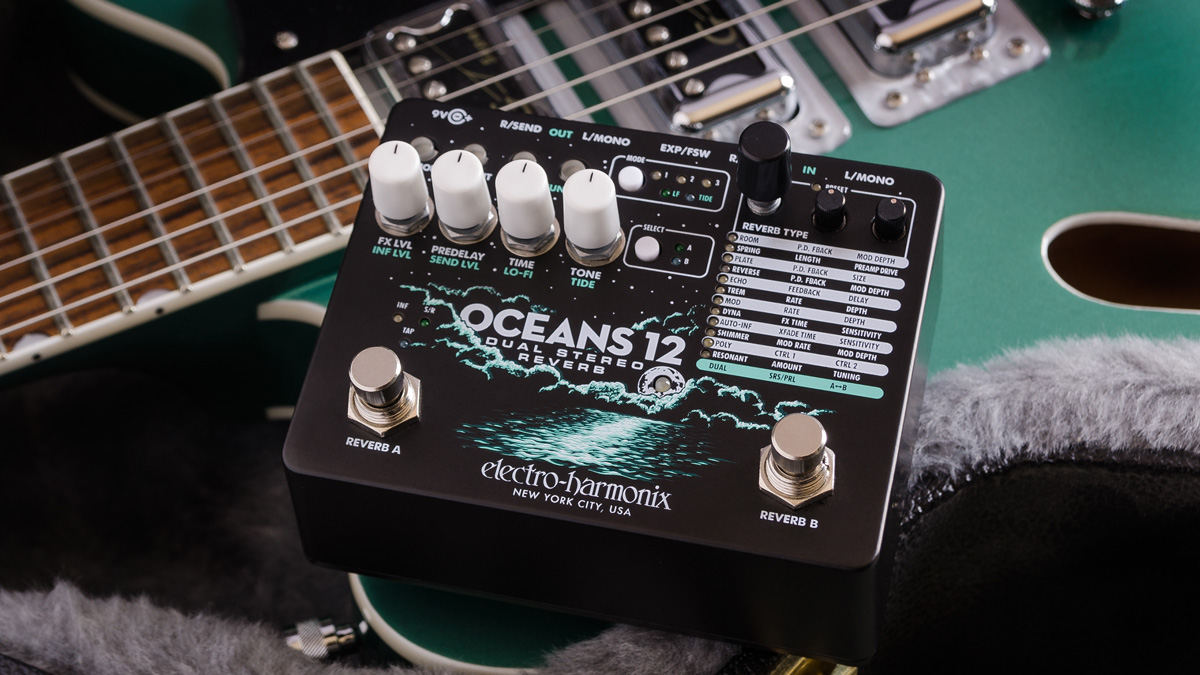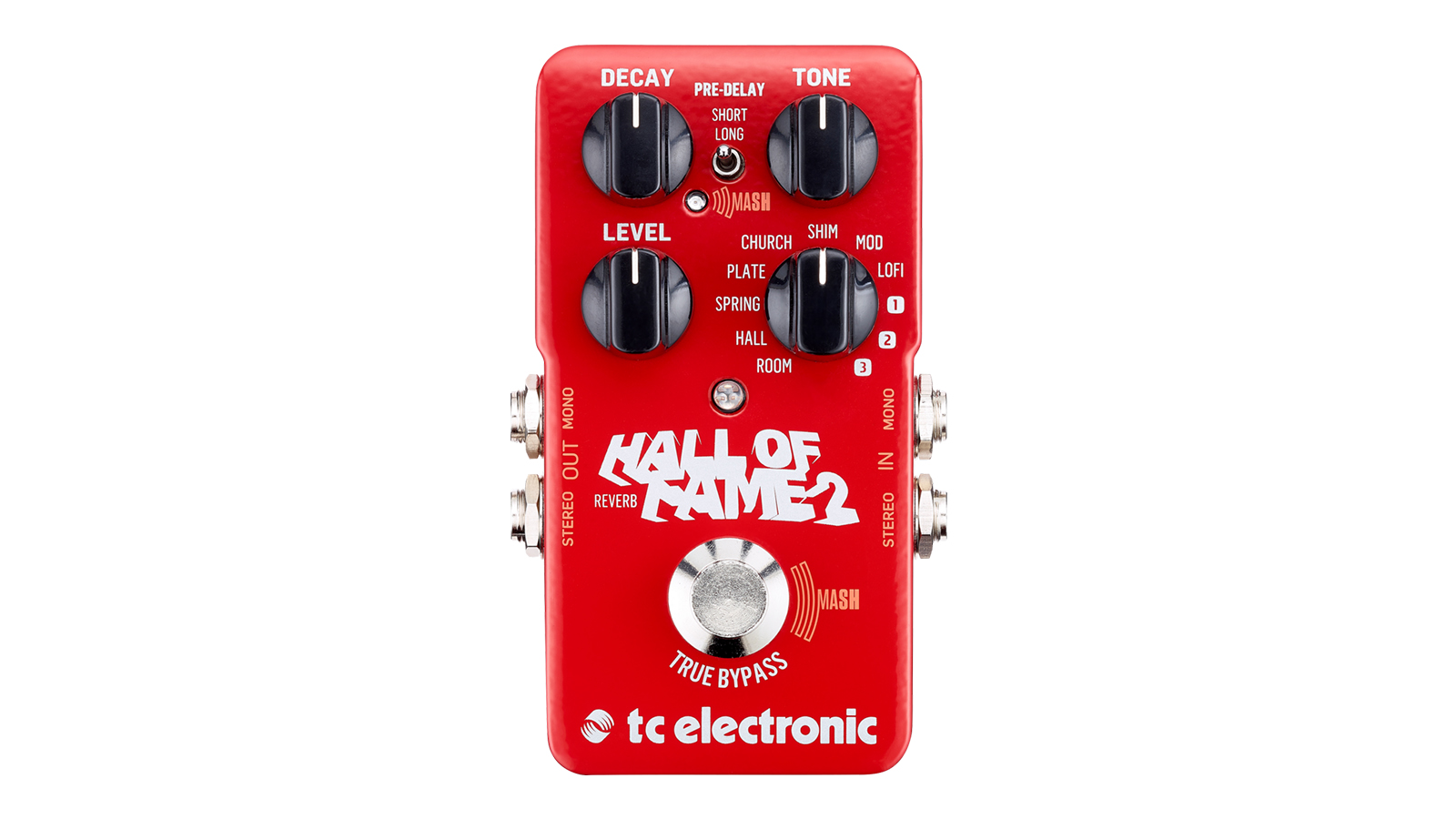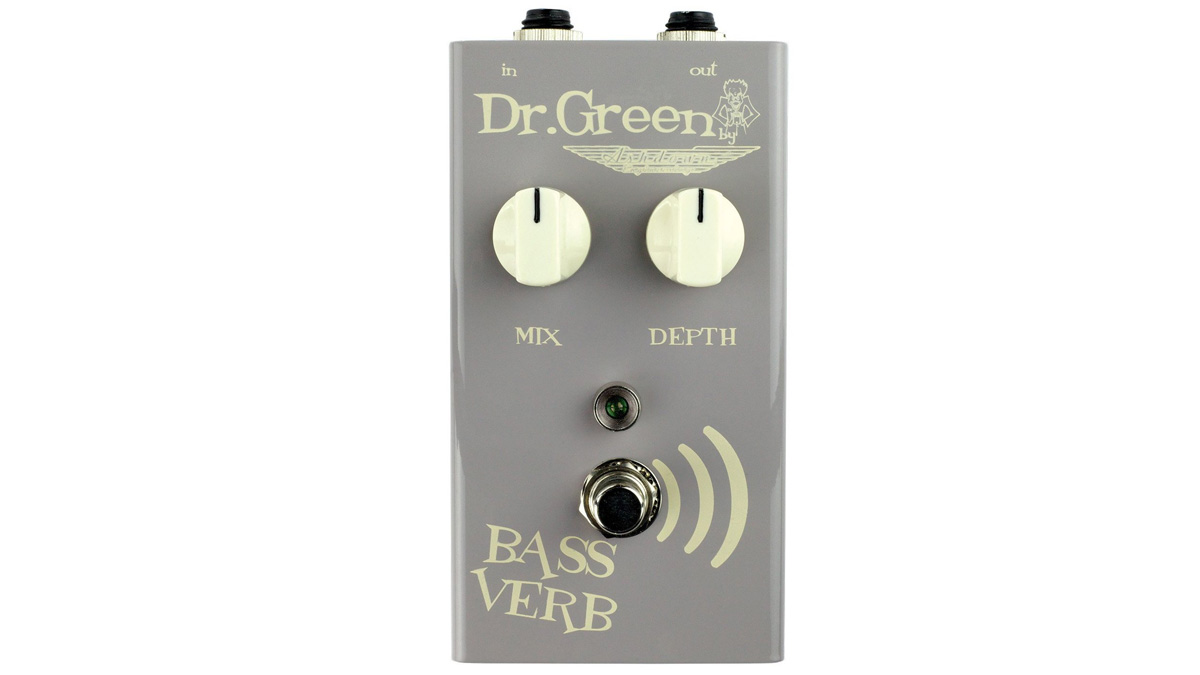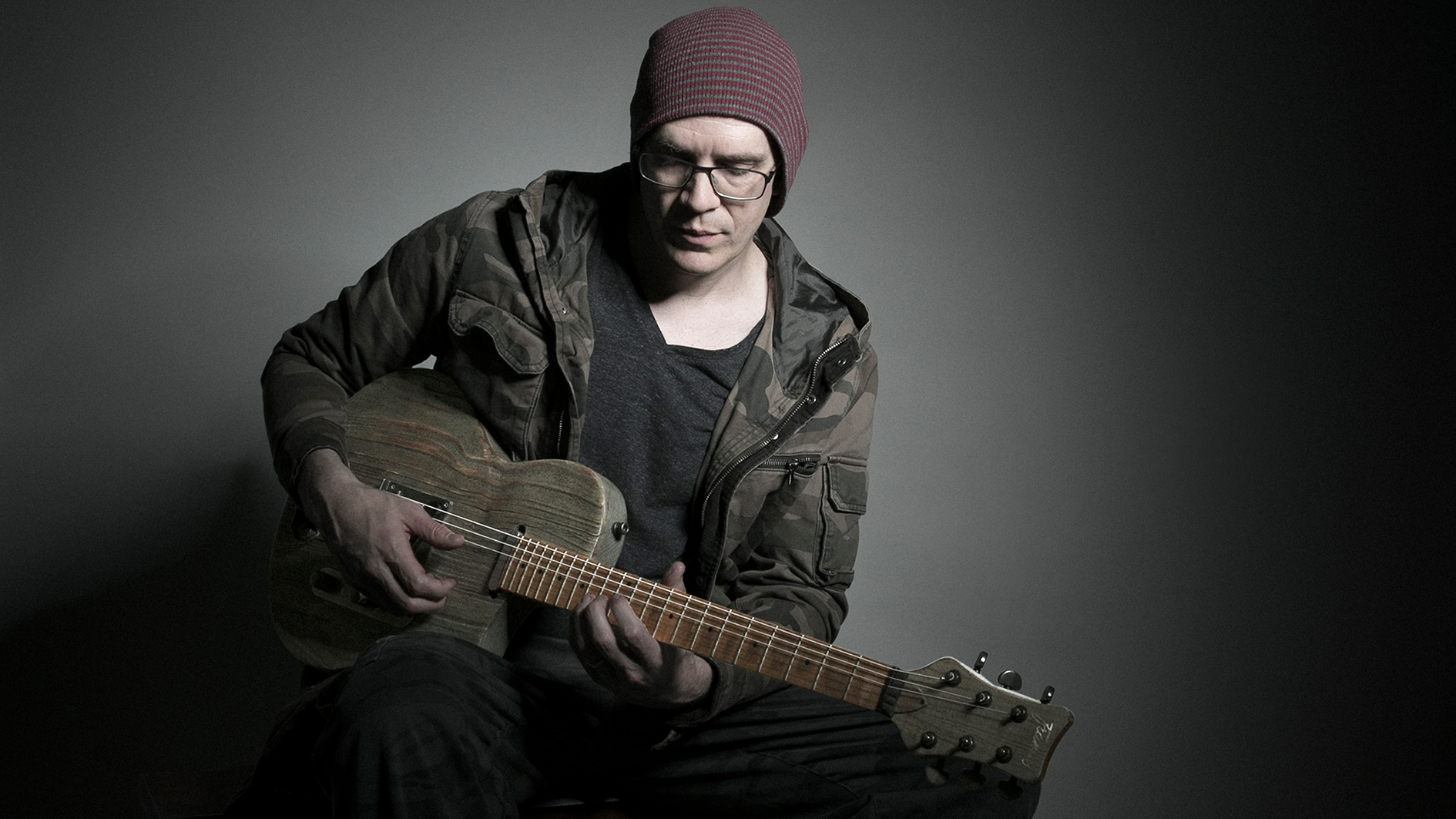How to use reverb pedals on bass guitar
Here's how to use reverb to add some space and dimension to your bass tone

The delay effect, which we studied in last month’s column, is usually defined as a very obvious repeat of a sound. In the world we inhabit, spaces have lots of surfaces – some near, some far – each of which consist of different materials. Sounds bounce off these surfaces, creating repeated echoes.
Multiple such reflections from close range may not be separately distinguishable to the human ear; instead, we perceive the bigger or wider sound of reverberation – ‘reverb’ for short.
Very good. Is it true that reverb pedals can be either analog or digital?
Yes, although the very mention of the word ‘digital’ will have some folk running for cover. No need to fear, though – advances in modern technology have created incredibly lifelike facsimiles of real-world spaces in the virtual domain.
In a live situation, watch out for the venue’s natural reverb too – as you may find your bass sound swallowed up
The reverb qualities of specific venues across the world have been sampled for us to enjoy in our bedroom studios. Analog reverbs may not have the same exacting parameters, but they still sound great.

But why would I use reverb with a bass?
Well, reverb is often used while recording to give an instrument a sense of space or depth. It allows the instrument to slot into a mix realistically, and can make it feel less as if it is stuck at front and center, dominating the recording.
In a live situation, even while you’re practicing at home, reverb applied to chordal or solo playing can bring your improvisations to life. Beware, though: Reverb sounds lovely on bass, but add too much and the punch of the sound can be lost. This happens when the lower frequencies become overwhelmed with reverb reflections.
Okay, I've got a reverb pedal. What the hell do all those knobs do?
• Level: Governs the level of the overall effect, balanced against the sound when the pedal is disengaged.
• Time/Decay: Controls the amount of time, usually in seconds, for which the reverb reflections continue until completely decayed away.
• EQ, HPF, Tone, Damp: As with many other pedals I have talked about in this continuing column, equalization can range from a very simple filter to an advanced set of parameters. In the case of reverb, equalization presets can help to simulate room surfaces, ranging from soft furnishings, to concrete walls, or glass.
• Pre-Delay: is the amount of time before the reverb effect kicks in after the initial note, often in milliseconds. It can help to provide separation between notes, or permit longer settings for artificial sounds.
• Mix: is simply the balance between your dry, or unaffected, sound and that of the reverb effect.

Any other jargon I need to know?
• Plate: Originally, studios employed massive sheets of metal to generate reverb. A transducer element vibrated when audio signals hit it, and a second element collected the resulting vibrations at the other end. The plate had a very particular sound, which this effect type replicates.
• Spring: Early amplifiers used long springs suspended in metal trays, in an arrangement similar to plate reverbs. These ‘Reverb Tanks’ have a very specific tone, which in the right context is rather pleasing, although it can be a little harsh at times.
• Room, Hall, Cavern: These were the original analog terms for various room types. Modern digital effects give us very accurate reproductions of real-world spaces.
• Reverse: A very clever method of producing a reverb tail – but then playing it out of the pedal backwards. Great for those psychedelic tones, man.
• Speciality reverbs: Multi-effect pedals often have cascaded effect blocks, which create ever-richer spatial tones. Pitchshifting, modulation effects and delays acting on the reverb are just the obvious possibilities.
• Stereo/Mono: Of course, we hear in stereo – and thus for the most immersive and realistic experience, stereo reverb always gets my vote.

Dan's recommendations
Use reverb sparingly. Short ‘room’ reverb mixed low on bass can give the perception that an amplifier has been recorded in a room space when it is simply a plugin from a digital audio workstation (DAW).
I’m careful, unless it’s an effect that I specifically want to achieve, to keep deep, cavernous reverb away from my low bass frequencies.
In a live situation, watch out for the venue’s natural reverb too – as you may find your bass sound swallowed up. Finally, if you love this effect, then check out Devin Townsend’s album Casualties Of Cool, which is swamped in luscious reverb!
Get The Pick Newsletter
All the latest guitar news, interviews, lessons, reviews, deals and more, direct to your inbox!
“There are so many sounds to be discovered when you get away from using a pick”: Jared James Nichols shows you how to add “snap, crackle and pop” to your playing with banjo rolls and string snaps
Don't let chord inversions bamboozle you. It's simply the case of shuffling the notes around







![Joe Bonamassa [left] wears a deep blue suit and polka-dotted shirt and plays his green refin Strat; the late Irish blues legend Rory Gallagher [right] screams and inflicts some punishment on his heavily worn number one Stratocaster.](https://cdn.mos.cms.futurecdn.net/cw28h7UBcTVfTLs7p7eiLe.jpg)


